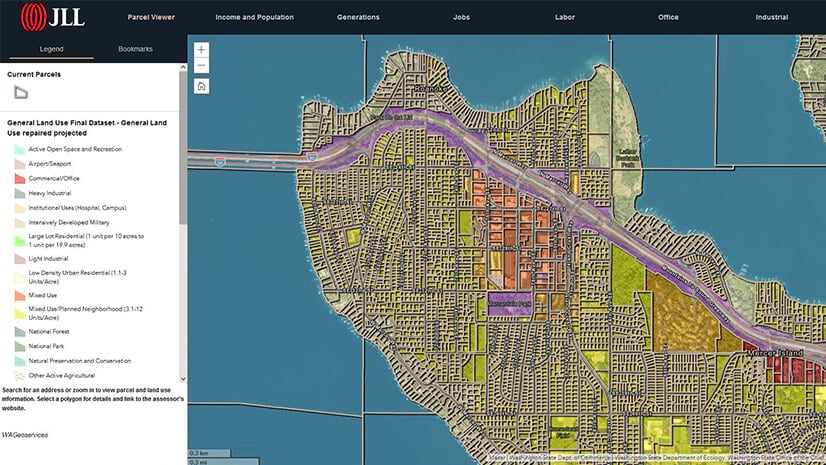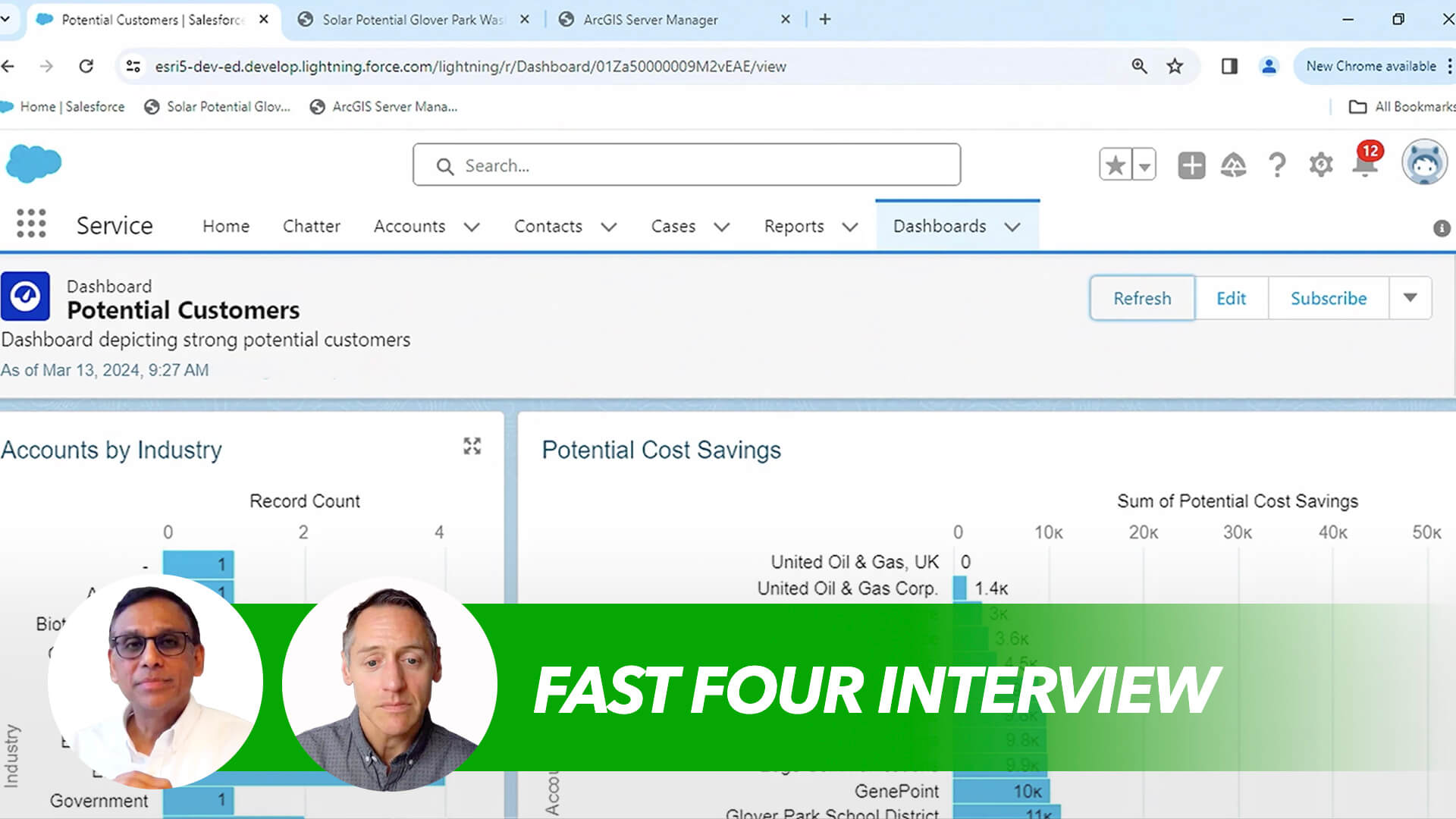Not long ago in corporate history, CIOs were judged by a metric—cost-cutting—that had little to do with their tech prowess. But today, technology is seen as a key competitive advantage, and the focus has shifted from austerity to innovation. A new era of CIO success has arrived.
Today’s standout IT leaders boast two key assets, according to Esri’s Jay Theodore: the ability to integrate software, systems, and data; and a knack for empowering smart decisions by CEOs, managers, and frontline professionals.
In this WhereNext Fast Four interview, Theodore explains the new profile of the CIO as chief integration officer. Through visuals and commentary, he shows how a CIO can integrate a CRM system with GIS technology to uncover new revenue opportunities.
Watch the video or read the transcript below.
Chris Chiappinelli: Welcome, everyone. Today, the WhereNext Fast Four is focused on the changing dynamics of the CIO’s role. Jay Theodore is here to share his view on the new habits of successful CIOs and why it may be time to define that role in a different way. Jay, why don’t we start at the beginning? What is the situation for CIOs right now?
Jay Theodore: Today’s CIOs are in a very uniquely challenging but yet very transformative position. They’re expected to drive business goals while also navigating technology challenges, facing way more complexity, I would say, than ever before. They also need to be very carefully identifying and incorporating AI into their organizations to meet these strategic goals.
That means CIOs have a lot of integration challenges. They must bring together data, software, hardware, both in the cloud and on-premises. To help achieve this, today’s CIOs need to be as much a chief integration officer as a chief information officer.
Chiappinelli: That’s an interesting point. How are CIOs changing to address those kinds of needs?
Theodore: I would say that they’re adjusting in a couple of ways. The first one is that they’re taking a stronger advisory role within the organization, not just looking for ways to contain costs anymore. They’re also actively empowering the leadership team or functional teams that need to make key decisions.
But very closely related to that, they’re also dealing with way more data than ever before. CIOs have to bring that data together to help these teams and decision-makers find very accurate and timely answers—and increasingly, I would also add, with help from AI.
Ultimately, the successful CIO is integrating systems and data for people to ensure that each decision-maker has a very comprehensive and a real-time view of the organization’s performance, risks, as well as opportunities.
Chiappinelli: Where does location intelligence fit into all that?
Theodore: Location intelligence comes from well-integrated systems and reliable data that can help employees go beyond the traditional who, what, when, and why questions to answer the where questions about business performance, about planning, prediction, and much more.
Let’s take an example: a solar energy system installer in the DC area. The sales team wants to identify who the potential customers are, but the CRM is missing key information. A salesperson can’t see each building’s solar potential or the cost savings that the owner might achieve. A GIS system, a geographic information system, excels at that kind of analysis. So, when the IT team integrates GIS with CRM, that information becomes available, and the sales team can answer the where question and prioritize its outreach based on that data.
So, I would say CRM, ERP, and GIS are foundational systems, and they need to function as a well-integrated system to successfully run any business of any size. And CIOs have a pivotal role in leading and delivering that effort.
Chiappinelli: With that integration in place, what kind of benefits does the CIO, the company see?
Theodore: They are in a very unique position to see the big picture, the strategic big picture. The CIO who focuses on integrating systems and data is always helping employees collaborate with each other and across technologies and across teams.
Now managers and executives are reacting to business performance issues quicker. They’re seeing more revenue opportunities that others don’t see. Integration is key to insight, and location-rich insight can mean more growth opportunities, finding areas to expand, areas to consolidate, tracking sustainability more effectively. We’ve seen all of those outcomes from some of the biggest and most successful brands in the world.
Today’s CIOs aren’t just managing technology and providing information systems. They’re envisioning, architecting, integrating the intelligence of people and technology that drive enterprise-wide business transformations.
Chiappinelli: That’s an interesting new perspective on an important role in the organization. Thanks very much for your time and for your insight, Jay.
Theodore: Thank you, Chris. It was great having this conversation.
Chiappinelli: For more on the CIO’s evolution, you can check out the link on the screen or in the article. For now, I’m Chris Chiappinelli with the WhereNext Fast Four. Thanks for being with us.
The Esri Brief
Trending insights from WhereNext and other leading publicationsTrending articles

December 5, 2024 |

November 12, 2018 |

July 25, 2023 |

February 1, 2022 |

March 18, 2025 |

May 28, 2025 |






